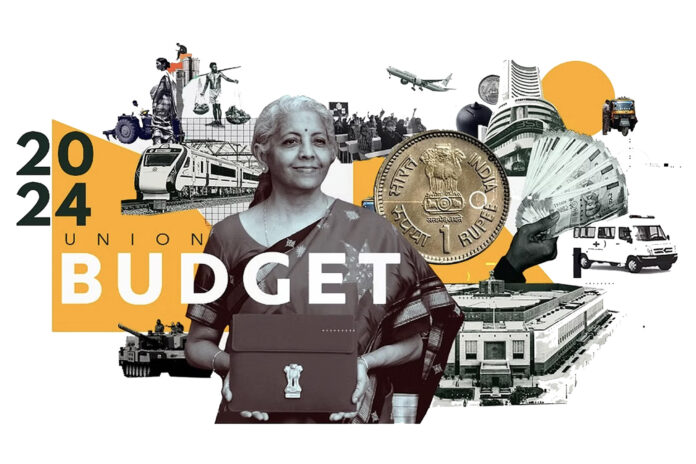Amidst a backdrop of global economic instability and pervasive policy uncertainties, India continues to chart a course of robust economic growth, with Finance Minister Nirmala Sitharaman presenting a hopeful outlook in her Union Budget 2024-25 speech in Parliament today. India’s economic resilience shines through with a stable and low inflation rate, presently at 3.1% for core inflation, steering close to the government’s target of 4%.
During the budget speech, Sitharaman emphasized that the government is proactive in ensuring that supplies of perishable goods remain steady, to counter any spikes in prices. The strategy underscores a broader commitment to maintaining economic stability and consumer confidence.
The budget pivots on enhancing the pillars of the Indian society—’Garib’ (Poor), ‘Mahilayen’ (Women), ‘Yuva’ (Youth), and ‘Annadata’ (Farmer)—as highlighted in the interim budget discussions. Sitharaman’s financial blueprint for the fiscal year puts a significant emphasis on skilling, employment generation, and bolstering the middle class and MSMEs. Notably, the Prime Minister’s ambitious package includes five schemes dedicated to creating employment and skilling opportunities for approximately 41 million youth over the next five years, with a substantial allocation of ₹2 lakh crore. The immediate fiscal year sees a generous provision of ₹1.48 lakh crore earmarked for sectors pivotal to education, employment, and skilling.
The finance minister outlined a comprehensive agenda structured around nine key priorities aimed at nurturing a ‘Viksit Bharat’—a developed India enriched with ample opportunities for all its citizens. These priorities are carefully designed to address diverse sectors ranging from agriculture and human resource development to advanced manufacturing and cutting-edge research.
In agriculture, the government plans a sweeping review of the current research mechanisms to pivot towards enhanced productivity. A notable initiative is the introduction of 109 new varieties of high-yielding, climate-resilient crops, earmarked for cultivation. To foster organic and natural farming, an ambitious target to transition one crore farmers within two years has been set, supported by appropriate certification and branding.
On the employment and skilling front, three innovative schemes are poised to incentivize first-time employment and bolster the relationship between employers and employees through the EPFO framework. The government’s vision extends to enhancing female workforce participation, with plans to establish working women hostels in collaboration with industry leaders and creating essential childcare facilities to support working mothers.
For the eastern region of India, the Purvodaya plan aims to drive comprehensive development across states like Bihar, Jharkhand, West Bengal, Odisha, and Andhra Pradesh. This initiative focuses on human resource development, robust infrastructure, and the creation of vast economic opportunities, intending to transform the region into a pivotal growth engine for the country.
Urban development receives a significant boost with the PM Awas Yojana Urban 2.0, targeting housing solutions for one crore urban poor and middle-class families with an investment totalling ₹10 lakh crore over the next five years. This includes substantial central assistance and aims to address the critical need for affordable housing in burgeoning urban centers.
The budget also underscores a strong commitment to energy security, with the launch of the PM Surya Ghar Muft Bijli Yojana, which has already seen over 1.28 crore registrations. This scheme facilitates the installation of rooftop solar panels, offering up to 300 units of free electricity monthly to one crore households, marking a significant step towards sustainable energy solutions.
Further, the finance minister highlighted substantial investments in infrastructure, with a record capital expenditure of ₹11,11,111 crore allocated for the current fiscal year, representing 3.4% of the GDP. This expenditure is a strategic move to stimulate economic growth through enhanced connectivity and modernized infrastructure.
The fiscal framework of the budget is strategically designed to support these expansive programs, with total receipts excluding borrowings estimated at ₹32.07 lakh crore and expenditures projected at ₹48.21 lakh crore for 2024-25. The government aims for a fiscal deficit of 4.9% of GDP, with a roadmap to reduce it below 4.5% in the subsequent year.










